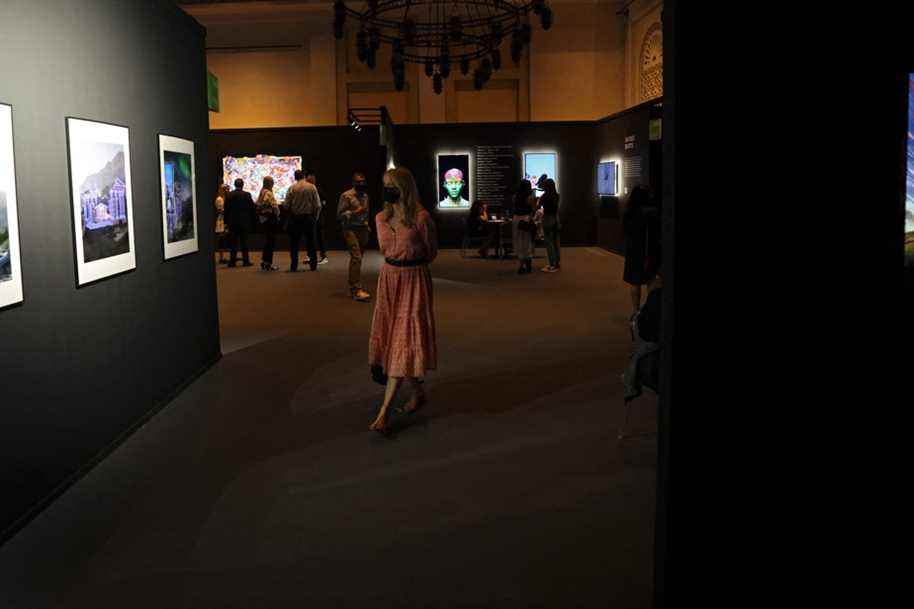(Dubai) Digital art makes its first appearance at the Middle East’s leading contemporary art fair in Dubai, the wealthy Gulf emirate that wants to become an international cryptocurrency hub.
Posted yesterday at 8:56
This 15and edition of Art Dubai, which until Sunday hosted more than a hundred local and foreign art dealers, has dedicated an entire wing to virtual art, bringing together 17 galleries and platforms for the sale of NFTs or digital objects authenticated.
NFTs – “non-fungible tokens”, non-fungible tokens in French – are tamper-proof certificates of authenticity and ownership, based on blockchain technology, the same as the one that authenticates transactions. cryptocurrency exchanges.
Art Dubai’s executive director, Benedetta Ghione, explains the decision to highlight them by the “interest and questions” they generate, but also by “the unique role that Dubai wants to play as an emerging crypto hub. “.
“It was the right time and the right place,” she adds.
After signing an agreement in December with Binance, the world’s largest cryptocurrency exchange, the Emirati authorities announced last week the adoption of a law on virtual assets and the creation of a regulatory authority. crypto-assets.
Exponential growth
This step “consolidates the position of the United Arab Emirates in this sector” and aims to ensure “transparency and security for investors”, commented on Twitter the ruler of Dubai, Sheikh Mohammed bin Rashid Al-Maktoum.
NFT galleries, on the other hand, see it as a positive signal for business, as cryptocurrency holders are increasingly interested in digital art as a means of investment.
“The crypto community in Dubai is growing exponentially,” rejoices Jennifer Stelco of the Morrow collective, which presents around twenty digital works, almost half of which have been produced by artists from the region.
Among them, that of Vesa, a Finnish artist based in Dubai who is among the best rated at the fair. His painting, combining painting and photographs retouched on the computer, is offered at 50 ethereum (a cryptocurrency) or the equivalent of around 120,000 euros, at the current price.
“Today we sold a work by Magda Malkoun for 3 ethereum (about 7000 euros),” says Jennifer Stelco.
This Lebanese artist creates animated images from collages representing her city, Beirut, in the guise of a woman.
The global NFT boom, illustrated by last year’s record sale of American artist Beeple’s work at over $68 million, has also encouraged the Emergeast gallery to convert to digital art.
First online platform in the Middle East, created in 2014, Emergeast sees today in NFTs an opportunity for artists in the region “to broaden their audience, to reach art collectors and non-collectors”, explains its co-founder, Nikki Meftah.
It also allows them to earn a better living since they receive royalties each time their work is resold, she adds.
Faced with the enthusiasm of investors for NFTs, the Emirati sculptor and painter, Aïcha Juma, nevertheless keeps a cool head. “People are interested in the medium, in the technology,” she says.
The artist joined the virtual world a few months ago by reworking sketches that she draws in a state of meditation on a tablet.
“Technology is extremely important, that’s undeniable, but I would also like people to be interested in the art and the message conveyed”, she concludes.
